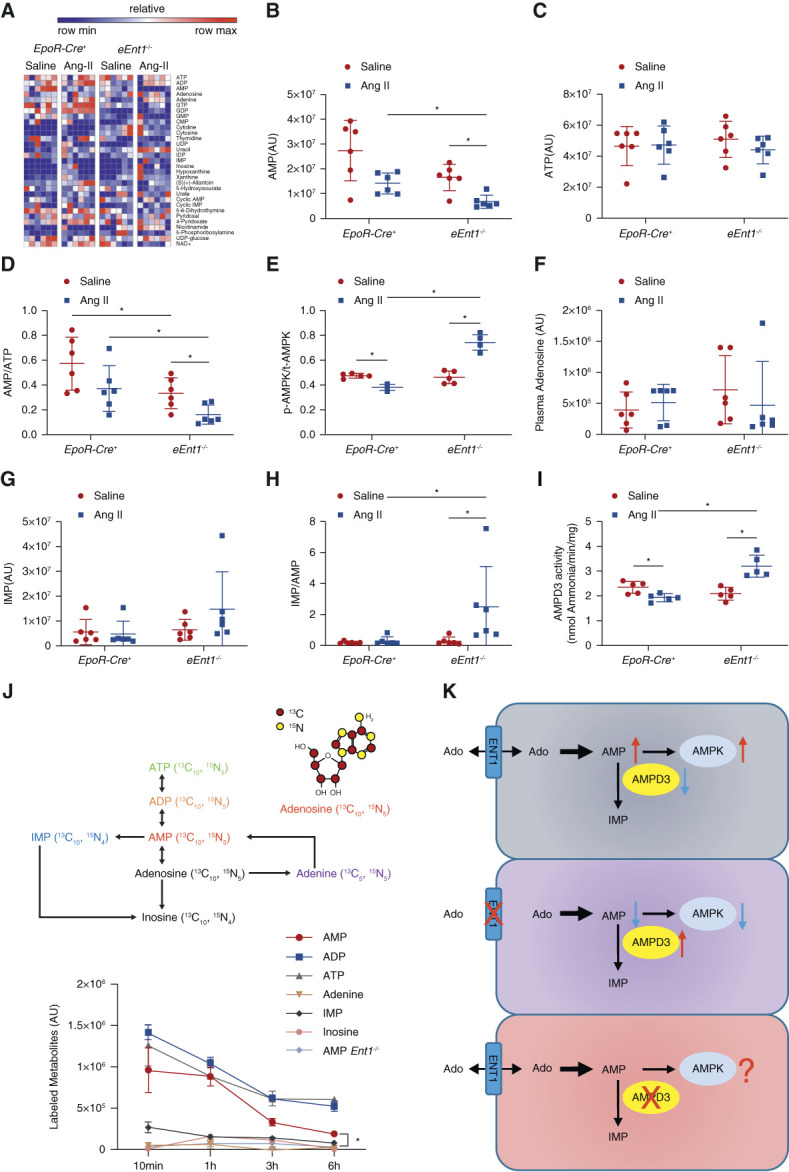Figure 3.

eENT1 orchestrates intracellular adenosine metabolism to promote BPGM activation by inhibiting AMPD3 and activating AMPK in CKD. (A) Heatmap of erythrocyte nucleotides and other metabolites measured by untargeted metabolomics. (B–D) AMP and ATP levels and the ratio of AMP to ATP. P values were assessed using the ordinary one-way ANOVA with the Holm–Sidak post hoc multiple comparisons test. No significant differences were observed. (E) The ratio of erythrocyte phosphorylated AMPKα to total AMPKα measured using Elisa kits. Data are expressed as mean±SEM. N=5 mice in each group. *P < 0.05. P value was assessed using the ordinary one-way ANOVA with the Holm–Sidak post hoc multiple comparisons test. (F) Plasma adenosine levels. (G) Erythrocyte IMP levels, (H) the ratio of IMP to AMP, and (I) AMP deaminase activity in erythrocytes. Data are expressed as mean±SEM. N=5 or 6 mice per group. *P < 0.05. P value was assessed using the ordinary one-way ANOVA with the Holm–Sidak post hoc multiple comparisons test. (J) Isotopically labeled adenosine flux experiments were conducted in cultured WT and eENT1-deficient mouse erythrocytes to determine how eENT1-facilitated uptake of adenosine was metabolized intracellularly. Data are expressed as mean±SEM. (K) Proposed hypothesis: eENT1 is critical to promote AMPK-mediated BPGM activation and functional regulation by promoting the uptake of extracellular adenosine, the inhibition AMPD3, and the accumulation of AMP inside of erythrocytes.
